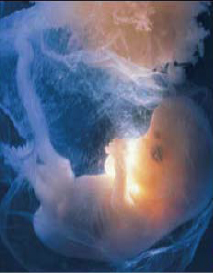July 26, 2011
By Mickey Friedman
According to a new report by Arthur A. Elkins, Jr. and his Office of Inspector General at the United States Environmental Protection Agency (EPA), EPA’s own “Voluntary Children’s Chemical Evaluation Program” (VCCEP) did not achieve its stated goal to protect children’s health.
Touted by the Clinton Administration as a program to give parents more information about toxic chemicals and their children’s exposure to toxics, an April 21, 1997 Executive Order directed EPA to undertake testing on chemicals to which children were disproportionately exposed.
With input from industry, EPA created a voluntary pilot program to assess the possible risks from 23 chemicals:
EPA asked the manufacturers and importers of 23 chemicals to volunteer to provide data sufficient for EPA to evaluate the risks of these chemicals to children’s health …Thirty-five companies and 10 consortia volunteered to sponsor 20 of the 23 chemicals by June of 2001.
According to the Elkins’ report, this program didn’t work for the following reasons:
the pilot had a flawed chemical selection process … Children’s behavior, children’s tendencies, and chemicals commonly found in children’s products were not factored in the chemical selection. Also, some industry partners chose not to voluntarily collect and submit information, and EPA’s decided not to exercise its regulatory authorities under TSCA to compel data collection.
Let’s pursue this in greater depth. According to the report,
the 23 chemicals selected for the VCCEP pilot were not the chemicals posing the greatest potential risks to children. (6)
Additionally:
there were specific chemicals not included in the pilot that were known by EPA and the children’s health community to pose greater risks to children … Phthalates, ultimately excluded from the pilot, are of concern to children’s health and are found in a wide range of products, including children’s toys. Since 1999, six phthalates have been restricted for use in toys in the European Union and at least 14 other countries have banned these phthalates in children’s toys. (7)

An unborn child and two children in different stages of childhood. Photo: EPA Office of Children’s Health Protection
The report cited another failed opportunity:
Bisphenol A (BPA) would have posed a natural fit for the pilot but was not considered for sponsorship … BPA is a plasticizer commonly used in baby bottles and sippy cups. Scientific research in the late 1990s indicated concern regarding the potential toxicity of BPA. Scientists with the Centers for Disease Control found BPA in the urine of nearly all of the people tested, indicating widespread exposure to BPA in the U.S. population.” Two studies of BPA found evidence of adverse effects on the prostate and of advancing puberty. (7)
Sheila Kaplan’s report for the Investigative Fund quoted Professor R. Thomas Zoeller, a biology professor at the University of Massachusetts at Amherst:
It has become very clear that chemicals can affect children both because of their exposure rates and concentrations. If you think about flame retardants in California, for example, the levels of these chemicals in children is very significantly higher than in adults. So I do think it’s disappointing that this entire program wasn’t taken more seriously by both by EPA and by industry.
The report concluded:
Poor program design and the Agency’s failure to use its TSCA regulatory authorities to compel data collection resulted in the failure of the VCCEP as an effective children-specific chemical management program. EPA demonstrated that it could not achieve children’s health goals with a voluntary program. The VCCEP is no longer operational, and the Agency has no plans to revive, replace or terminate the program. As a result, the Agency is not meeting the intent of EO 13045 … and there is still no readily understandable source of chemical exposure information that the general public can access to determine potential risks to children. (14)
The Elkins’ report points to serious flaws in our efforts to protect our children – our most vulnerable citizens – from the harmful effects of modern-day chemicals. It points to the risks associated with a program that relies on voluntary compliance from members of an industry that profits greatly from the sales of these chemicals.
The issue has added relevance to those of us living in Berkshire County where the EPA is engaged in an effort to enforce a cleanup of extremely toxic PCBs from the Housatonic River and its floodplain. As the Elkin report notes, there are many difficulties involved in getting accurate information about our exposure to toxic chemicals, and to adequately determine the risks we face when we are exposed to toxics.
At the moment, General Electric and its allies in the local business community, its political friends in Pittsfield, the statehouse and in Congress, are all making a push to challenge the need for a comprehensive cleanup. As part of that effort, GE is challenging the well-accepted scientific evidence that PCBs pose a significant threat to human and environmental health. State agencies like the Department of Environmental Protection and the Department of Fisheries and Wildlife are willing to concede that fish and ducks and other wildlife will forever be contaminated with PCBs rather than endorse a carefully monitored program of dredging and removal, a program that could cost GE up to a billion dollars.
PCBs have been known to cause cancer and are known to have adverse effects on the immune system, on human and animal neurodevelopment, the thyroid levels of humans and animals, adverse effects on the reproductive system, and other non-cancers effects on the skin, eyes, liver and cardiovascular system.
As the Elkin report reveals, it is never easy to get regulatory agencies to resist the interference from industry and industry lobbyists to fulfill their mandate to protect human health and the environment. Here in Berkshire County we are fortunate to have EPA officials who are anxious to do the best job they can. Unfortunately, there are many people who don’t want that to happen.

